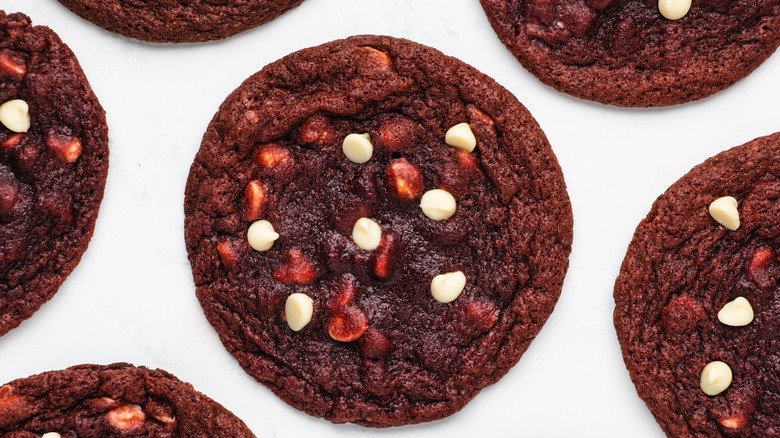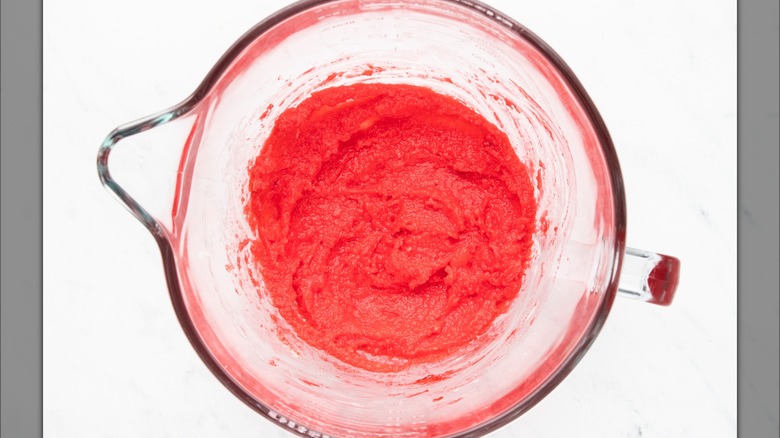Liquid Vs Gel: Which Type Of Food Coloring Is Best For Red Velvet Cookies?
In the realm of desserts, a sweet treat's color often corresponds with its flavor. With red velvet goodies, however, that isn't quite the case. The truth about red velvet is that its distinctive red hue has nothing to do with its taste, which actually tends toward chocolate due to the use of cocoa powder (though red velvet cake is still different from chocolate). Still, red velvet's rich color is part of what made the flavor into a star, especially for holidays like Christmas and Valentine's Day.
If you're making anything in the red velvet family of baked goods, you have to nail the treat's signature color. In Mashed recipe developer Catherine Brookes' excellent red velvet cookies recipe, she achieves this with "a few drops of food coloring," but the type you have sitting in your pantry might not be right for the job. While most people are likely familiar with the liquid food coloring that comes in squat bottles with pointed caps, Brookes says a "highly pigmented gel variety will work best." Gel food coloring is far more concentrated than its traditional liquid form, ensuring your red velvet cookies will reach their desired primary color scheme in just a few drops.
Gel food coloring preserves the cookie dough's texture
The low color concentration of liquid food coloring means you have to use a great deal to achieve red velvet cookies' ideal color. Alternatively, Brookes says you can achieve the same hue with just four drops of the gel variety. Using liquid might make your hand cramp up from all the squeezing, but what's more, the additional liquid can ruin the cookie dough's ratio of wet to dry ingredients, ultimately making the mixture too runny. This, in turn, will make the cookies over-spread in the oven and turn them into one thin, crunchy, red layer — hence why Brookes' preferred gel food coloring is the ideal choice for this sweet. That quartet of drops will preserve the texture of your dough, resulting in red velvet cookies that she says are "wonderfully soft and chewy." More importantly, they'll maintain that perfectly red hue.
Keep in mind that Brookes adds the gel food coloring before any of the dry ingredients, initially suggesting that the cookies will have more of a cherry-red color. After mixing in the flour, baking powder, baking soda, salt, and cocoa powder, however, the dough will transform into that familiar shade of crimson that everyone associates with red velvet, and it will contrast beautifully with the recipe's white chocolate chips.

